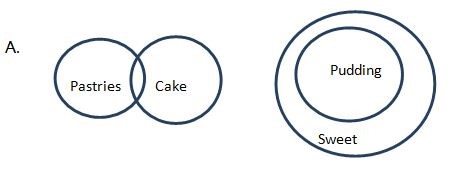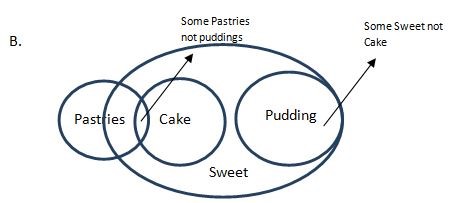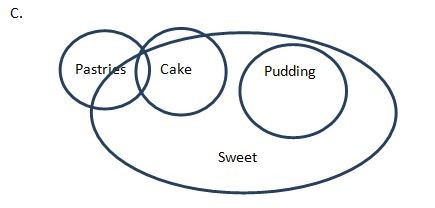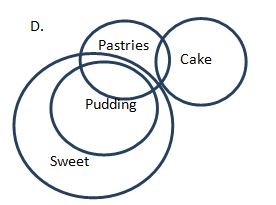Question
Statements:Some pastries are cakes. No cake is a
pudding. All puddings are sweets. Conclusions:I. Some sweets are not cakes. II. Some pastries are not puddings. In each of the questions below are given three statements followed by three conclusions numbered I and II. You have to take the given statements to be true even if they seem to be at variance with commonly known facts. Read all the conclusions and then decide which of given conclusions logically follows from the given statements disregarding commonly known facts. Give answerSolution
No cake is a pudding (E) + All puddings are sweets (A) ⇒ some sweets are not cakes (O*). Hence, conclusion I will follow. Some pastries are cakes (I) + No cake is a pudding (E) ⇒ some pastries are not puddings (O). Hence, conclusion II will also follow. ALTERNATE METHOD: Possible cases: 


 In all the cases, I and II both follow.
In all the cases, I and II both follow.
Consider the following statements about Pompe disease:
1. Recently, India’s first patient of Pompe disease was cured.
2. It is a rare in...
Statistics Day is observed on June 29 in India to honor which notable figure in the field of statistics and economic planning?
Which Indian official co-chaired the 13th JDCC meeting between India and UAE?
Life Insurance Corporation (LIC) of India's shareholding in Dixon Technologies India Limited has decreased from 5.012 per cent to ________ at an average...
What is the name of the first submarine base commissioned by Bangladesh?
Who was the most searched Indian sportsperson globally in 2024?
Which company will enhance Norway’s critical financial infrastructure by partnering with BankID BankAxept AS, Norway’s national payment and electron...
Which of the following states is not covered under the Atal Bhujal Yojana (ATAL JAL)?
During the Prevention of Blindness Week 2024, what key practices were emphasized to prevent eye ailments?
Which state is developing India’s first Quantum Computing Village?


